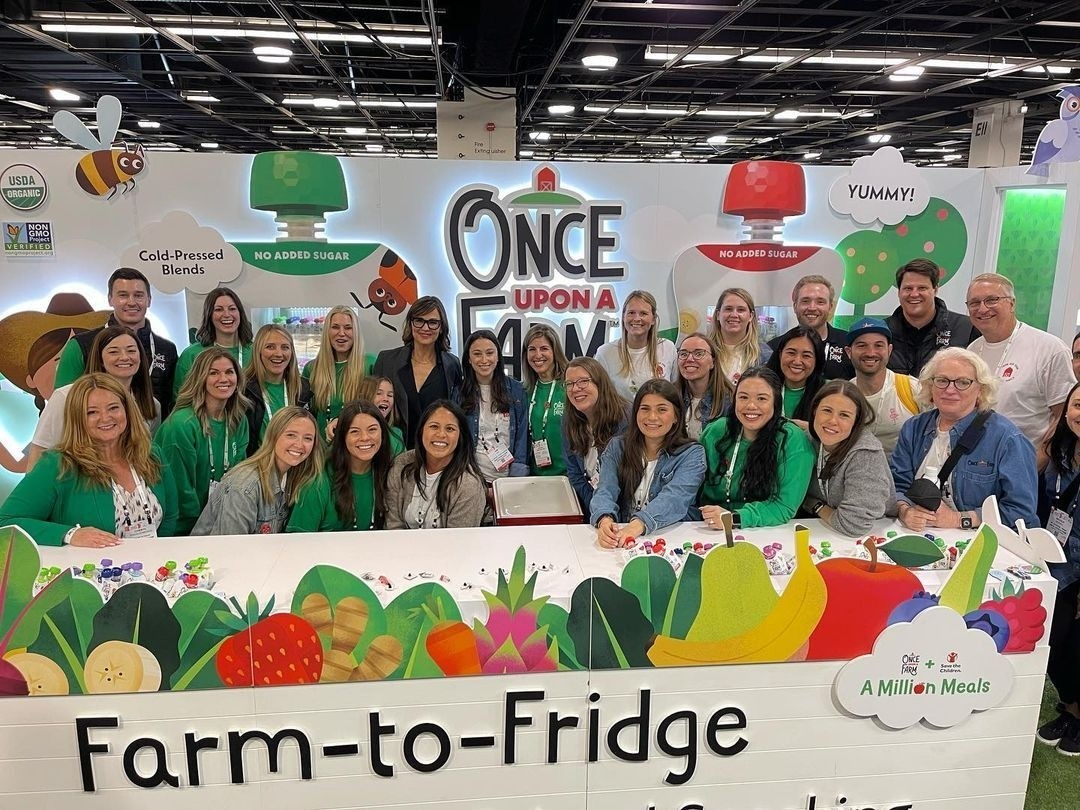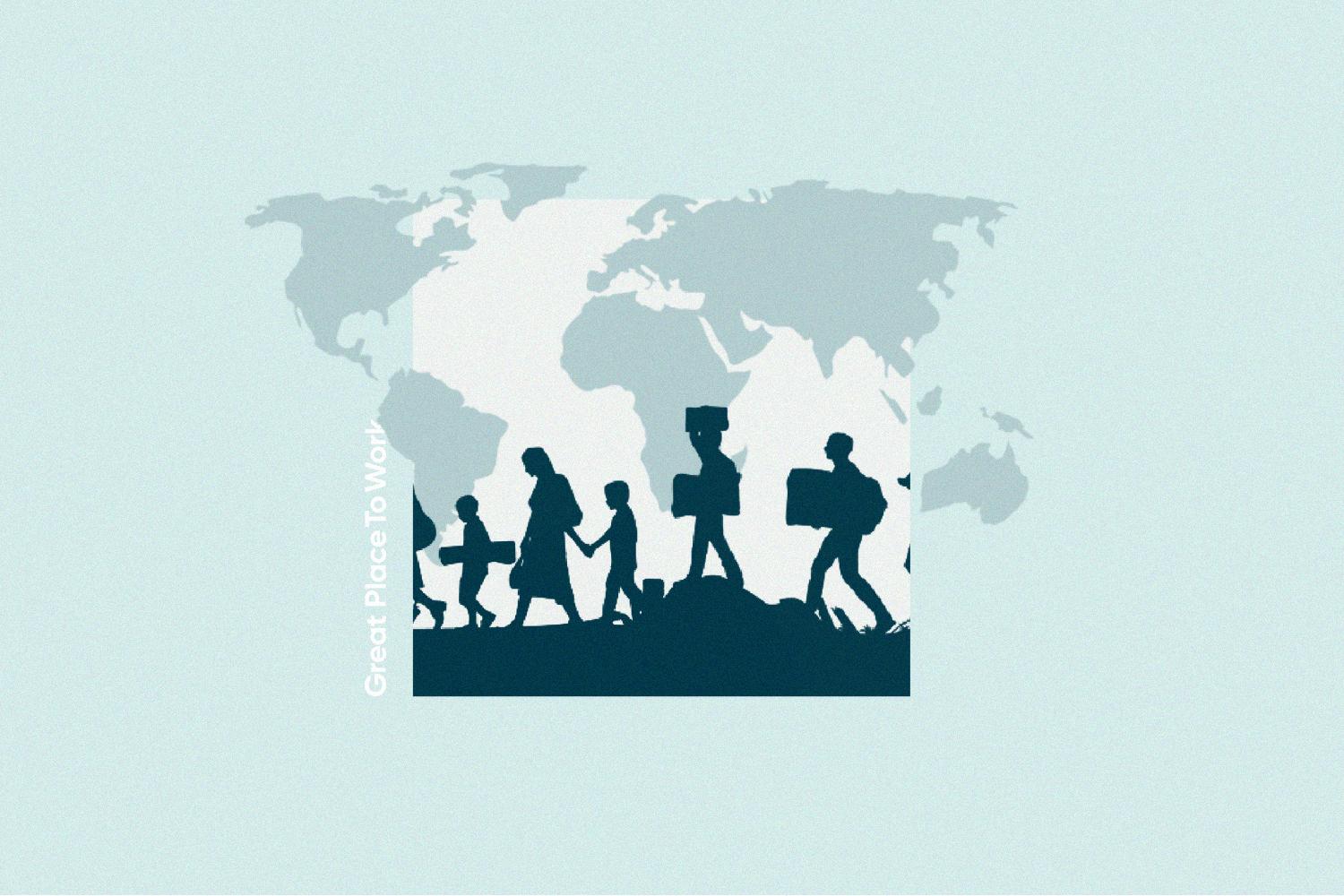Once Upon a Farm, No. 64 on the Fortune Best Small Workplaces™ List for 2024, shares lessons learned from creating its employee engagement committee.
If you’re at a company with fewer than 100 employees, creating a network of employee resource groups might not immediately make sense for your organization.
However, Once Upon a Farm, one of the Fortune Best Small Workplaces in 2024, has adapted the employee resource group (ERG) concept to fit the needs of its 87 employees. Its Employee Engagement and Empowerment Committee, or E3, functions as the one resource group for all employees and offers an essential listening channel for the organization.
The E3 committee has 23 members, but only seven-to-10 of them join a monthly call to discuss upcoming activities and activations for employees. The group also has an active Slack channel, where more of the 23 members participate.
“It’s a cross-functional committee,” says Melissa Ninegar, senior director of people and culture at Once Upon a Farm. “The company is fully remote — and this is one of the ways that we can get everyone from different departments to collaborate and create some engagement opportunities that are informed by our cultural values.”
A crucial listening channel
Members of the group can share feedback on all aspects of their experience at the company.
“We get a lot of great feedback on the cultural health of the organization,” says Ninegar. “How are we doing as a remote company? How’s your relationship with your manager? How’s your faith or your confidence in the company? How are you doing with your team and how are you doing individually?”
Monthly meetings are a chance to share plans for upcoming events but also make sure everyone has a chance to share their perspective.
“You can’t just keep telling yourself that you’re doing a good job and assuming everything is going great,” says Honoria Hayes, people experience specialist at Once Upon a Farm and a manager of the E3 committee.
“We really want to hear what everyone thinks because that’s how you foster that culture where everyone feels like they can come to work and have a hand in building this environment,” Hayes says.
How can SMBs celebrate diversity and inclusion?
A core responsibility of the E3 committee is creating programming to honor awareness months and cultural holidays across the organization.
The committee might book a guest speaker or organize a donation to a nonprofit that supports a specific group. The committee has an annual budget of $30,000, which it allocates monthly with the ability to roll over funds month-to-month.
“If we want to go a little bit bigger one month, we have to keep in mind that we’ve got to be scrappy elsewhere,” Ninegar says.
For Pride Month, the committee brought in an external speaker to raise awareness about transgender people and their experiences.
For Asian and Pacific Islander Heritage Month, the committee partnered with an organization called Confetti, which curates a list of experts that can teach classes on a variety of topics. The result was a workshop for employees about the contributions of Asian and Pacific Islanders to American culture and their many achievements.
For Black History Month, the committee’s programming was careful to be educational but also joyful.
“We wanted to provide something that was focused less on the tragic parts of the Black experience and a little bit more on the joyful side, because we are happy people, too,” says Hayes. “We wanted to say, ‘Here’s something else that you can celebrate.’”
Hayes often presents several options to the committee, but choosing programming for a particular month or awareness day is a group effort. For Pride Month, the group wanted to make a donation as well as invite a guest speaker. To select a group for the donation, Hayes sent out a quick survey to the E3 committee to get feedback.
ERGs build belonging for remote teams
An ERG can play a crucial role in connecting remote workers as well.
At Once Upon a Farm, the E3 committee sponsored a “Nourish and Nurture” Slack challenge in response to employee feedback that remote employees felt unable to create a healthy work-life balance.
“People want to be responsive in a remote work environment,” says Ninegar. “Anytime an alert goes off, it’s really tempting just to respond to it — so we are always going to have to work that much harder to protect people’s boundaries.”
The Nourish and Nurture challenge asked employees to share a picture or share a post about how they are taking care of themselves.
Each post counts as one point — adding a picture counts as a second point, with a maximum of two-points earned per day. Points can then be used to redeem prizes at the end of the challenge.
“It was such a success that everyone asked, ‘Can we keep this open?’” Ninegar says. As sponsors of the challenge, the E3 committee was instrumental in getting buy-in for the effort and leading adoption of the program for employees.
Measuring success
How does Once Upon a Farm know if its E3 committee is having the desired impact? In a word: surveys.
“We do the big annual engagement at the end of the year,” Ninegar says. And after every meeting, Ninegar and Hayes ask for feedback. To confirm that people are sharing their genuine experience, Hayes looks carefully at engagement during the event.
“I’m always looking to see how many people are attending, what sort of comments are they dropping in the Zoom meeting.” Hayes says. “I trust that everyone’s going to always give their honest opinion, but actions speak so much louder than words.”
Tips for other SMBs
Hayes and Ninegar shared three tips for others trying to create their own resource group at a small- or medium-sized company:
1. Money helps — but it isn’t everything
“You just got to put the legwork in,” says Hayes. “Research, ask your network, see who knows who. There’s always going to be someone willing to help and to further your organization’s learning.”
2. Lean on your values
“Anytime you can invite your mission or your values into any space, it’s going to better inform the work that you’re doing,” Ninegar says.
At Once Upon a Farm, that means addressing sustainability and finding activities that connect with what employees care about.
“If we’re raffling off any kind of prizes, I try to support a smaller business, get something secondhand, or get a gift card that supports a business that’s woman-owned or API-owned,” Hayes says. “We always try to carry that through when it comes to our work.”
3. Stay curious
“One of the biggest hurdles in doing this kind of work is that you want to be able to lean on what you already know,” Hayes says. “That can be a great starting point, but you don't know everything.”
That often means relying on external partners or taking the time to research a topic before launching a program. “Be open to furthering your own knowledge first,” Hayes says.







